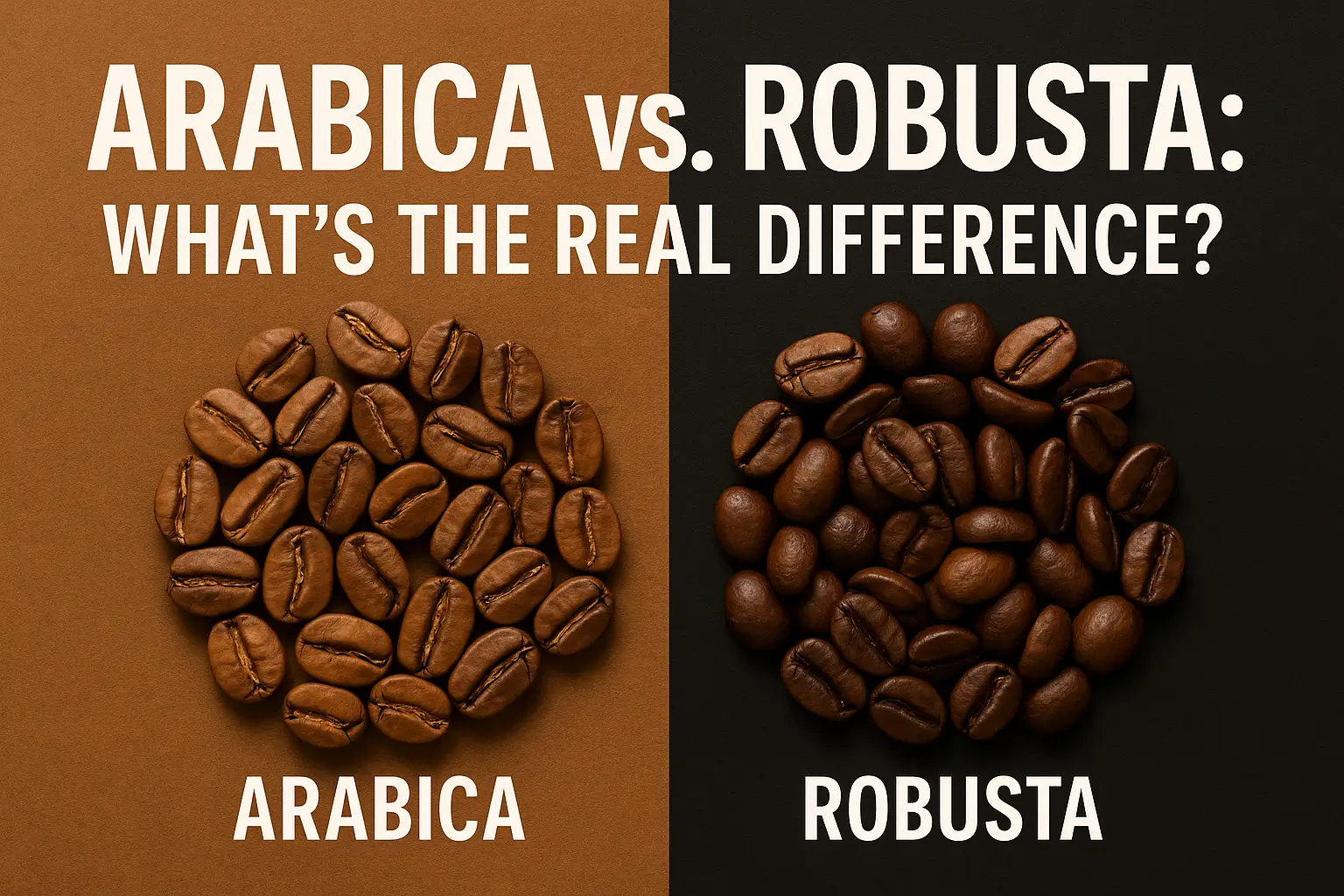Not all coffee beans are created equal. If you’ve ever browsed a bag of coffee and noticed the terms “Arabica” or “Robusta,” you may have wondered what they really mean — and how they affect your cup of coffee.
In this article, we’ll explore the key differences between the world’s two most common coffee species: Coffea arabica (Arabica) and Coffea canephora (Robusta). Understanding their distinctions in flavor, caffeine content, cultivation, and cost can help you make better choices at the coffee shop or grocery store.
What Is Arabica Coffee?
Arabica is the most popular type of coffee worldwide, accounting for approximately 60-70% of global production. Native to the highlands of Ethiopia, Arabica beans are prized for their complex flavor and aromatic profile.
Key Characteristics:
- Flavor: Smooth, sweet, with notes of fruit, chocolate, or floral tones
- Acidity: Bright and well-balanced
- Caffeine: Lower (about 1.2–1.5%)
- Shape: Oval with a curved crease
- Altitude: Grown at 600 to 2000 meters above sea level
- Climate: Cooler, with well-distributed rainfall
Arabica plants are more sensitive and require ideal growing conditions, making them more expensive to cultivate. However, their nuanced taste has made them the favorite in specialty coffee circles.
What Is Robusta Coffee?
Robusta is hardier and grows more easily in a wider range of environments. While often overlooked in favor of Arabica, Robusta is commonly used in instant coffee and espresso blends, particularly in Italy and Vietnam.
Key Characteristics:
- Flavor: Strong, bitter, earthy, with woody or nutty notes
- Acidity: Low
- Caffeine: Higher (about 2.0–2.7%)
- Shape: Round with a straight crease
- Altitude: Grows well at lower altitudes (0–800 meters)
- Climate: Hotter temperatures and more resistant to pests
Robusta’s high caffeine content acts as a natural pesticide, making it more robust (hence the name) and cheaper to produce. While often labeled as “inferior,” high-quality Robusta can bring depth and crema to espresso.
Flavor Profile Comparison
| Feature | Arabica | Robusta |
|---|---|---|
| Taste | Sweet, fruity, complex | Strong, bitter, nutty |
| Acidity | High | Low |
| Body | Light to medium | Full and heavy |
| Aroma | Fragrant, floral | Earthy, rubbery (in low grades) |
If you enjoy more nuanced and subtle flavors, Arabica is your go-to. If you prefer a strong, bold kick — especially in espresso — Robusta might be your match.
Caffeine Content: Which Packs More Punch?
Robusta contains almost twice the caffeine of Arabica. This makes it a preferred choice for people seeking a strong energy boost. However, the extra caffeine also contributes to Robusta’s bitterness and astringency.
| Type | Caffeine (per 100g) |
|---|---|
| Arabica | 1.2g – 1.5g |
| Robusta | 2.0g – 2.7g |
For those sensitive to caffeine, Arabica is generally the safer bet.
Brewing Differences
Arabica beans are often used in:
- Pour over
- French press
- Drip coffee
- Specialty espresso blends
Robusta is commonly used in:
- Espresso blends (especially for better crema)
- Instant coffee
- Traditional Vietnamese coffee
In espresso, Robusta helps create a rich, foamy crema and adds body, which is why many Italian blends use a mix of both beans.
Price Comparison
Because Arabica is more difficult to grow, it tends to be more expensive. Robusta is cheaper, which makes it attractive for large-scale commercial production.
Price also reflects quality — Arabica farms often focus on small-batch, high-quality beans, while Robusta is more associated with mass-market products.
Environmental Impact
Robusta is easier on the environment in some ways because it requires less pesticide due to its higher caffeine content. However, Arabica’s higher cultivation standards can lead to more sustainable and ethical farming practices, especially in fair-trade and organic systems.
Can They Be Blended?
Absolutely! Many espresso blends combine both Arabica and Robusta to balance flavor, body, and crema. A common blend ratio is 70% Arabica / 30% Robusta, which retains sweetness while adding intensity.
Blended coffee is often:
- More affordable
- More balanced in body and taste
- Preferred for milk-based drinks like cappuccinos
Which Should You Choose?
It depends on what you’re looking for in a cup:
| Preference | Go For |
|---|---|
| Smooth, aromatic flavor | Arabica |
| Budget-friendly energy boost | Robusta |
| Espresso with rich crema | Blend (with Robusta) |
| Light-bodied black coffee | Arabica |
| Full-bodied milk drinks | Robusta or Blend |
Final Thoughts: The Right Bean for You
There’s no right or wrong choice — only what suits your palate and purpose. Arabica is refined, aromatic, and prized for complexity. Robusta is powerful, resilient, and bold. Each has a place in the coffee world, and often the best experience comes from understanding both.
Whether you’re brewing a delicate Ethiopian pour-over or a strong Vietnamese Robusta with condensed milk, knowing your beans will always help you brew better coffee.
